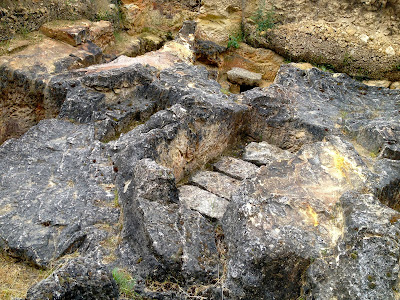These next few posts may be out of order because we have been in the mountains all weekend and are now trying to catch you all up!
Day 2 of our Trek:
We all woke up at around 8am, cuddled together in our giant communal beds in our rustic 'shelter' building. We had breakfast downstairs with all the other hikers that were staying there too. (these hikers were going even farther up the mountain, while we were heading back to civilization). Then after packing up our bags, and suiting up once again in our gear, we headed out into the cold. (30 degrees Farenheit) It had snowed so much overnight, probably six inches of fresh fluff to navigate through, thank god for our guides, Gabriel and Vincente!
 |
| The incredible view that we walked out and witnessed that morning! (A lake and huge mountain) |
How can I begin to explain this experience? Incredible and majestic are a couple words that come to mind. Where we went, no cars can go. There are no roads that lead there! How crazy is that feeling?! You are so removed from everything in life that is insignificant, distracting, and unimportant. While it was a challenge nearly every minute, the snow never ceasing and the wind blowing in our faces as we climbed up the mountain through the snow, it was rewarding. The feeling that you get when you reach the top of the climb and you stop and look out over the valley, cannot be explained. You feel empowered, and in awe, like you're on top of the world. It makes you feel like you should reflect over your life and really organize your thoughts and feelings. It removes you from life and all the worries and gives you time to just think: Am I where I want to be in my life? Am I happy? For me the answer was yes, so I smiled.
Despite some tired legs and wet pants, we made it back to civilization and piled into the van to warm up. At that point we headed to Ávila, a small town up near these mountains. We had the chance to change into dry clothes and enjoy thick hot chocolate by a fireplace in a nearby lodge! Then we toured the town.
We first visited the Church, which is a mix of Romantic and Gothic architecture. This church actually has two functions: religious and protection. The church was built in as part of the wall that surrounds the entire town. The church is amazing because in the main section, used for worship, a special stone indigenous to the area was used. It is called Piedra Sangrante (bloody stone). It is almost a tie-dye effect of red and grey.
Next we walked to another church, this one dedicated to Santa Teresa de Jesus. The room in which she was born was turned into a beautiful chapel (capilla).
 |
This plaque is in the capilla, and says that Pope Juan Pablo II visited this chapel.
|
After our visit to Avila, we checked into our hotel to get a good, hot meal and rest up for another day of hiking!










































